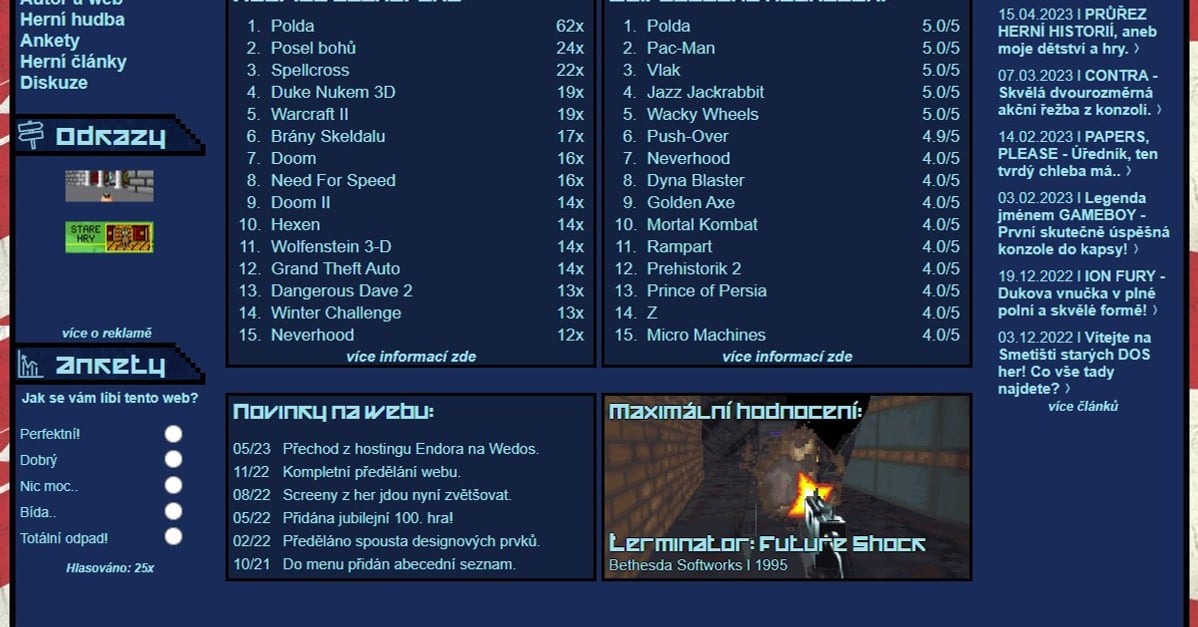This is an automated archive made by the Lemmit Bot.
The original was posted on /r/hobbydrama by /u/just-got-toasted on 2024-10-07 10:37:42+00:00.
Introduction
The video game industry is a challenging one to break into. It’s an extremely demanding profession that requires a lot of time, money, and mental energy to succeed at. Over the course of the 30+ years of the industry’s existence, many ambitious teams and projects came and went with various results. There are plenty of tales of smash success, comfortable mediocrity, and flops. It’s the successes and flops that usually print themselves into the memory of gamers, and those stories carry over from one generation onto the next.
The story I will try to present here will fall into the latter categories.
The Beginning
We land in the Czech Republic, a tiny country in continental Europe, in 1997. After being mostly viewed as a niche enthusiast hobby from the end of communist rule until the early 1990s, the commercial success of several point-and-click games began the country’s first steps toward stardom, which will arrive after the turn of the century. Our game fits under the point-and-click category as well. In the roughly 100k town of Ústí nad Labem, a tiny game company named TOP Galaxy is created. The guys from this studio don’t have a lot of information available about them because they only released a single game. You will soon find out why. This group of ambitious developers gets to work almost immediately after formation.
Overly ambitious, perhaps?
TOP Galaxy had a big vision. It includes international distribution, several language localizations (including voice acting and subtitles), more than 20 hours of gameplay, and an blend of excellent 3D graphics and air-brushed (yes you read that right, air-brushed, not painted) 2D graphics. Due to factors we will discuss later, only two of these things would materialize. Now, a brief summary of the game’s plot line.
The Plot
The game is set some time after 2020, when virtual reality on Earth was outlawed in 2003 due to its addictive nature. American journalist Jimmy Dix goes to a so-called “entertainment orbital station” named “DreamLand,” built in 2016, and is researching the mystery of virtual reality players who supposedly go insane following a visit to the station. He travels to seven separate virtual environments (a laboratory, Frankenstein’s castle, ancient Egypt, 1930s Chicago, 17th-century Macau, an airbase, and a jungle) in his effort to solve the mystery. For whatever reason, there are also cyborg monkeys used as cheap labour.
The Development
The aspirations of the young team would catch up with them at a breakneck speed. The 1998 deadline for the game’s release quickly became impossible due to the game’s increase in complexity; yet, strangely enough, the physical edition still bears the copyright year of 1998. Thus, the game was postponed. The development was also struck by other unknown problems, which likely led to the developers decreasing their ambitions. As a result, plans for an international release and localization were put on hold, but despite this, English subtitles and the main menu indicate that some localization work has already been done. One of the few last straws to this dreadful development cycle was the game’s enormous size, which prevented it from fitting on two CDs, so the developer had to resort to three, further increasing the costs of development. The final number, you ask? After conversion and adjusting for inflation, the total cost was an colossal 847 thousand US dollars — at least for the time and nation’s being. The game lacked any anti-piracy features, which made the situation even worse, as the game leaked before release. Although that wasn’t the final nail in the coffin, this was one of the last ones.
The Release
Finally, the year 1999 arrives, marking the game’s official release. The game’s technical and visual aspects are praised in the reviews, which are largely mixed and most critique is sent towards the voice acting and snail - paced narrative. Remember the 20 hour playtime? Yep, that is one the reasons for it. The last nail for the coffin would arrive in the from of the retail price. 110 US dollars. While the exact number of copies sold is unknown, there are unconfirmed reports of 10,000 copies being produced for retail. The inability to secure a international publishing deal was just a finishing touch on the figurative coffin that is the commercial failure of the game, though “annihilation” might be a more accurate description. The team behind the game would follow up by closing its doors only a year later.
The Impact
The enormous failure of TOP Galaxy and Dreamland: Final Solution is quickly forgotten, as Hidden & Dangerous was released less than a year later, making the Czech video game industry globally known and setting the stage for many classics, such as Mafia, ARMA, Operation Flashpoint, UFO, Euro Truck Simulator, Kingdom Come: Deliverance, the smaller Amanita Design titles and plenty of others. The moral of the story? I am not sure about the entirety of it, but “don’t bite off more than you can chew” might be among the lessons to learn from here.
For the curious, the game can be found here.

